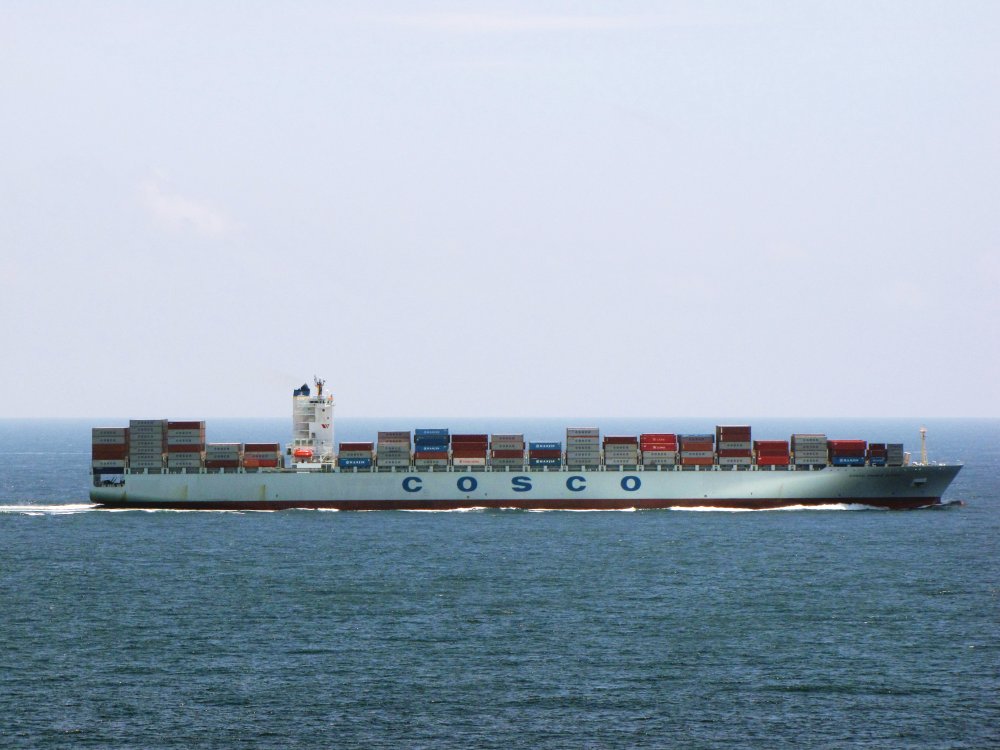I have started with my student bird observations by describing my process and wrong turns:
When I started this question, I decided to check the sizes of the picture as well as the actual and soup can dimensions:
I measured the bike height from the bottom of the wheel to the top of the handle because I believe the picture is taken from a slight angle. I wasn't able to measure the length of the tank accurately so I didn't fill it in the table. I measured the tank from the ground up and rounded up slightly because the tank is partially in the ground:| Bike Height (cm) | Length (cm) | Diameter (cm) | |
| Picture | 3.5 |
-- |
7 |
| Actual | H | L | D |
| Soup Can | -- | 10.1 | 6.2 |
Then, I researched the bike size and after analyzing Norco bikes based on the Stack height and wheel diameters, I estimated that the bike was about 0.95 metres, or 95 cm high and used this as my H.
Because I wanted to relate the bike height with the diameter, I at first thought H + x = D, where x was some number, but didn't find this very helpful. Then, I decided to use the picture relation and real dimensions to get the following:
| 3.5 | = | 95 |
| 7 |
D |
D = 190 cm
Then I used the soup can dimensions to get the actual length of the can:
| 190 | = | 6.2 |
| L | 10.1 |
L = 309.516129 cm
Thus the diameter of the actual tank is around 1.90 metres while the length is about 3.10 metres long.
As a sanity check, assuming my bike height estimation is correct, this makes sense because it means the diameter of the tank is about twice the height of the bike.
To calculate volume, the equation is V = π*r2*h, so (using the cm for simplicity) we get V = π*(190/2)2*(309.516129)
V ≅ 8775671.713 mL
Most statistics about putting out fires were in gallons so I converted this amount from mL to gallons and got 1930.37791 imperial gallons. From the sources I found, most listed gallons per minute, ranging from 100 gpm - 2000 gpm needed for fires depending on how severe they were, how long it took the firefighters to arrive on scene etc. (Quora question answered by firefighter, Firehouse.com). There were also too many variables to determine how many minutes were needed for the fire to go out. As one firefighter said, most house fires could be tackled with the 500 gpm power (Quora question answered by firefighter), so if the average house fire could be put out in less than 4 minutes, this tank would be enough.
My teacher bird thought this would make a very interesting project for students to flesh out and find more information on for different scenarios (e.g. research water tanks in the areas they live and determine what range of fires that tank could handle). It seems like a simple question at first but once it is attempted, there are many questions to consider. I started with a chart because I couldn't just jump in and start solving - I needed to figure out where I was and where I wanted to go. The topic of putting out fires is also a good one because all students would be familiar enough with the concept to have an understanding of what was going on, and the application of ratios was a little more interesting than simply enlarging an image or determining the full size of a building given a scale drawing and one of its dimensions like we usually see in textbook questions.
Extension Question:
 |
| Image source: https://ship-photo-roster.com/ship/cosco-prince-rupert#1 |
The Prince Rupert Port container ship, Cosco, is 334 metres long. The photographer of the above picture closed their right eye and aligned their thumb with rightmost edge of the ship. Then they closed their left eye and opened their right to see that their thumb appeared to have moved 1/4 of the ship's length to the left. Estimate how far the photographer is from the container ship. How far away would the photographer have to be to just see the entire ship in their peripheral vision if they were standing directly in the middle of the ship, lengthwise? Hint: On average, humans have 120 degrees for their field of peripheral vision.
Solution: For the first part, we use the distance estimation method to get 334/4 * 10 = 835 metres away.
Next, we use tan(60 degrees) = 167/d, d = 96.42 metres away.


No comments:
Post a Comment